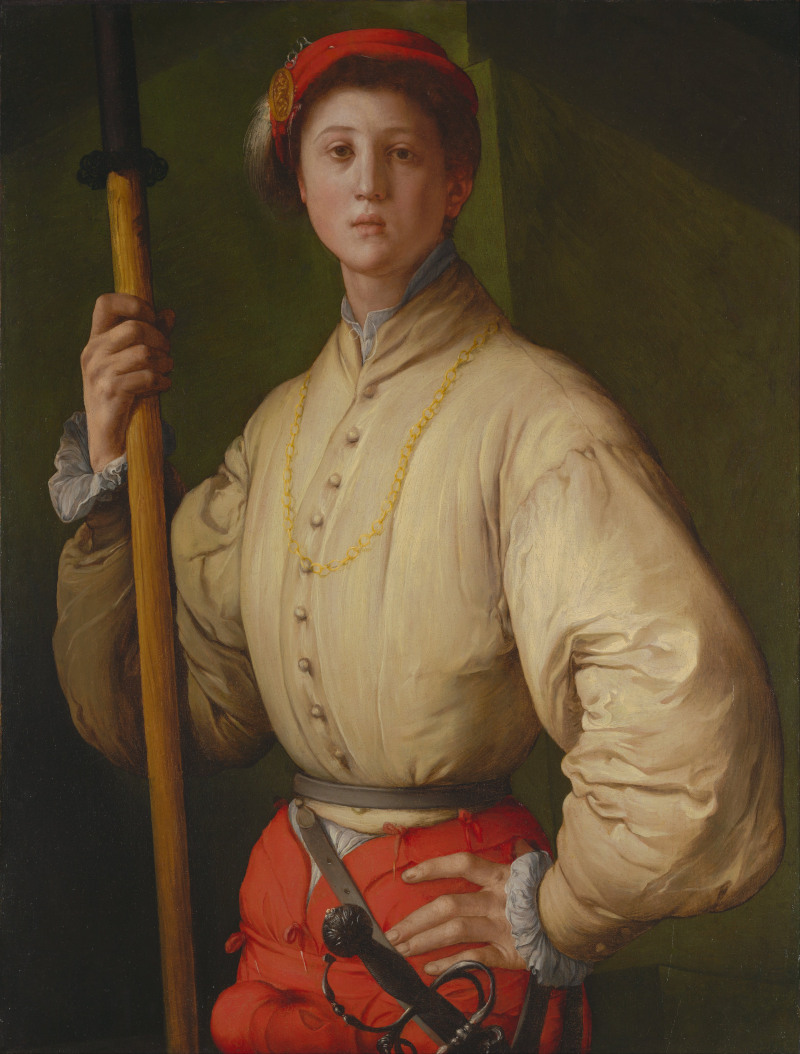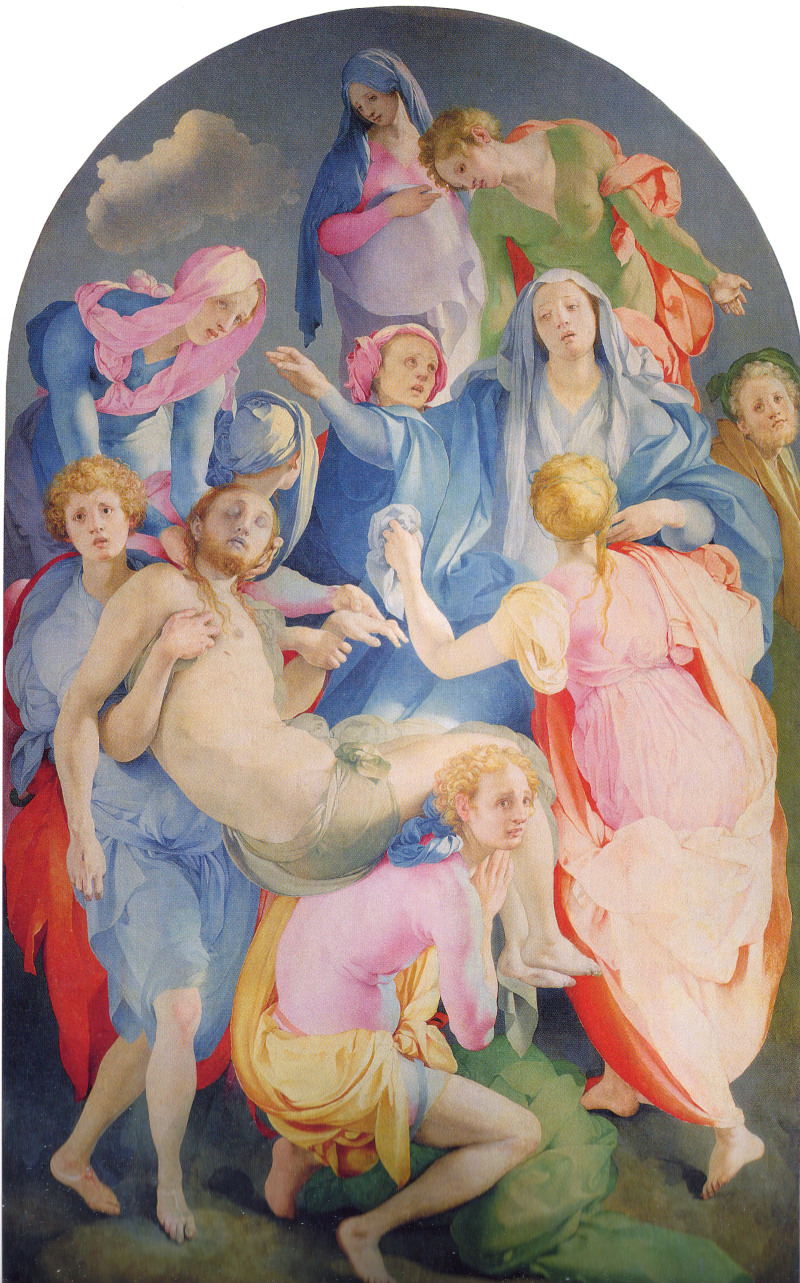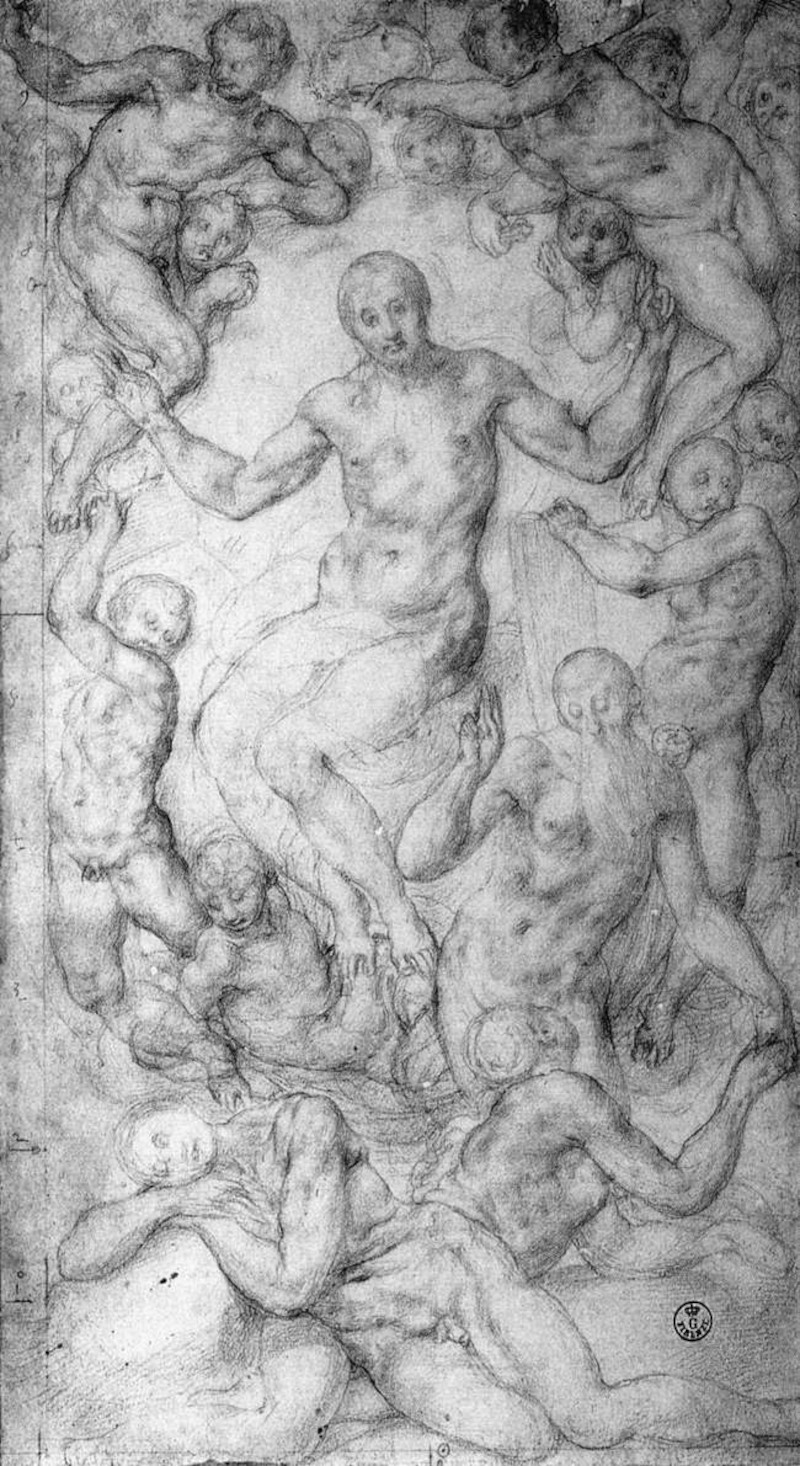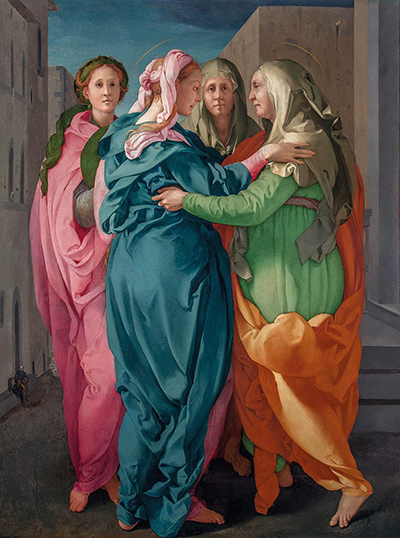Pontormo, also known as Jacopo da Pontormo, was a key 16th century Italian painter who helped to bring about the Mannerist art movement.
The artist used a more relaxed attitude to perspective and other developments found in the Florentine Renaissance, whilst also incorporating unusually bright tones within his portraits. Many of his scenes were highly complex, featuring countless numbers of figures interacting with each other across each wooden panel.
Introduction
Pontormo's artistic style was incredibly fresh, and he was supported by the Medici family who supplied him with regular commissions in and around Florence. He would sometimes travel elsewhere in order to learn from other artists, but generally worked in Florence throughout his career. Some have suggested that his work laid the way towards the Baroque era, and many stylistic similarities can certainly be identified.
Through the efforts of pioneering Mannerists like Pontormo... a new style emerged that depended as much upon direct experimentation as it did upon theory.
Irving Zupnick, 1966
Florentine School
The Florentine School was key to the success and evolution of the Italian Renaissance, passing through the early contributions of Giotto, before moving onto the great masters such as Michelangelo and Raphael. Pontormo took aspects of their innovations but also imparted his own to create a unique approach which helped bring about the next phase, post-Renaissance. By the time that Baroque art rose to prominence, however, the Florentine School had lost its influence, and would eventually be consigned to history, albeit with a huge artistic legacy.
Agnolo Bronzino
Bronzino would become Pontormo's closest pupil, and in his early years worked in a near identical manner, leaving a challenge for historians to discern which had produced certain elements of collaborative paintings. In later life, though, Bronzino would become more independent in his stylistic choices, and very much forge his own path from that point onwards.
Bronzino was so respected that the two helped to run Pontormo's studio together, with his younger pupil given considerable authority over other apprentices.
Mannerism
Mannerism was an artistic movement which came about towards the end of the Italian Renaissance. Its attributes would lead perfectly into the Baroque era, which quickly spread across Europe. Essentially, after centuries of achieving precision and accuracy within Italian art, the new generation wanted to allow more artistic license, such as by extending the human figure beyond reality. Pontormo's approach offered a subtle starting point in this transition, and was certainly a brave move for the artist, coming at that time in the Renaissance.
Medici Family
Pontormo enjoyed a strong relationship with the Medici family, which was critical to his commercial success as an artist. His favoured pupil, Bronzino, was also hired as court painter to the Medici just as his style started to diverge from his master. The vast majority of his major commissions came in and around the city of Florence, which is also where the Medici held sway. They were open minded and highly knowledgeable with the visual arts, and often allowed more flexibility for expression than other major donors.
Pontormo Artwork Gallery

Portrait of a Halberdier

Deposition from the Cross

Christ and Creation of Eve (Drawing)
Major Projects
Capponi Chapel
Pontormo completed a number of significant artworks for the Capponi Chapel in the church of Santa Felicita, Florence. This included Matthew, Luke, & John, Deposition and Annunciation, with Bronzino helping him out on some elements of this work. The project lasted from 1525-1528, though they completed each artwork in stages. The series of paintings perfectly captures the essence of Pontormo, with bodies full of life and action, writhing alongside each other. The bright tones and impressive detail found in The Deposition from the Cross also have led some to consider it his finest painting of all.
Deposition from the Cross
The Deposition from the Cross, completed in 1528, served as an altarpiece in the Capponi Chapel of the church of Santa Felicita in Florence. Many consider it to be Pontormo's finest artwork, certainly of those that have survived to the present day. One looks up at this piece and feels the weight of Christ upon ourselves, with this figure placed in the lower half of the scene. Despite the bright tones, there is an atmosphere of sadness, in line with the religious narrative that it so delightfully captures.
 Deposition from the Cross
Deposition from the Cross
Visitation
Shortly after completing his work in the Capponi Chapel, Pontormo produced another major piece which focused on the Visitation from the Bible. In this scene the artist captures four female figures, with the two nearest us in an embrace. It is memorable for the bright outfits which underlines the artist's excellent handling of color, and helps to remind us of how his work stood out from all others in Florence at that time.
Influences on the Artist
Pontormo was an unusual artist within Florence, for he took considerable lead from northern European artists, even though he was so closely connected with great masters in his local area. Much is made of his friendship with Michelangelo, for example, though his more relaxed approach to line and perspective deliberately went away from the precision used by others at the time. It was as if accuracy had already been achieved, and he wanted to be an artist who once again instill emotion as a priority.
In terms of his own legacy, Pontormo developed a strong relationship with Mannerist artist Bronzino, and helped to lead him on the path to success within his own career. Whilst their respective styles would eventually diverge considerably, they were able to forge a strong relationship and still learn much from each other.
Conclusion
Even today, Pontormo's work stands out as remarkably unique, with few other artists will to follow his lead in quite the same way. That said, some of his stylistic choices did re-appear soon afterwards, and many connect his work to the likes of El Greco, who similiarly used elongated figures within his dramatic scenes. His alternative approach did fall out of fashion for a number of years after his passing, but more recently there has been a growing interest in his work, and his connection to Michelangelo also helps to keep his name fresh in our minds.




